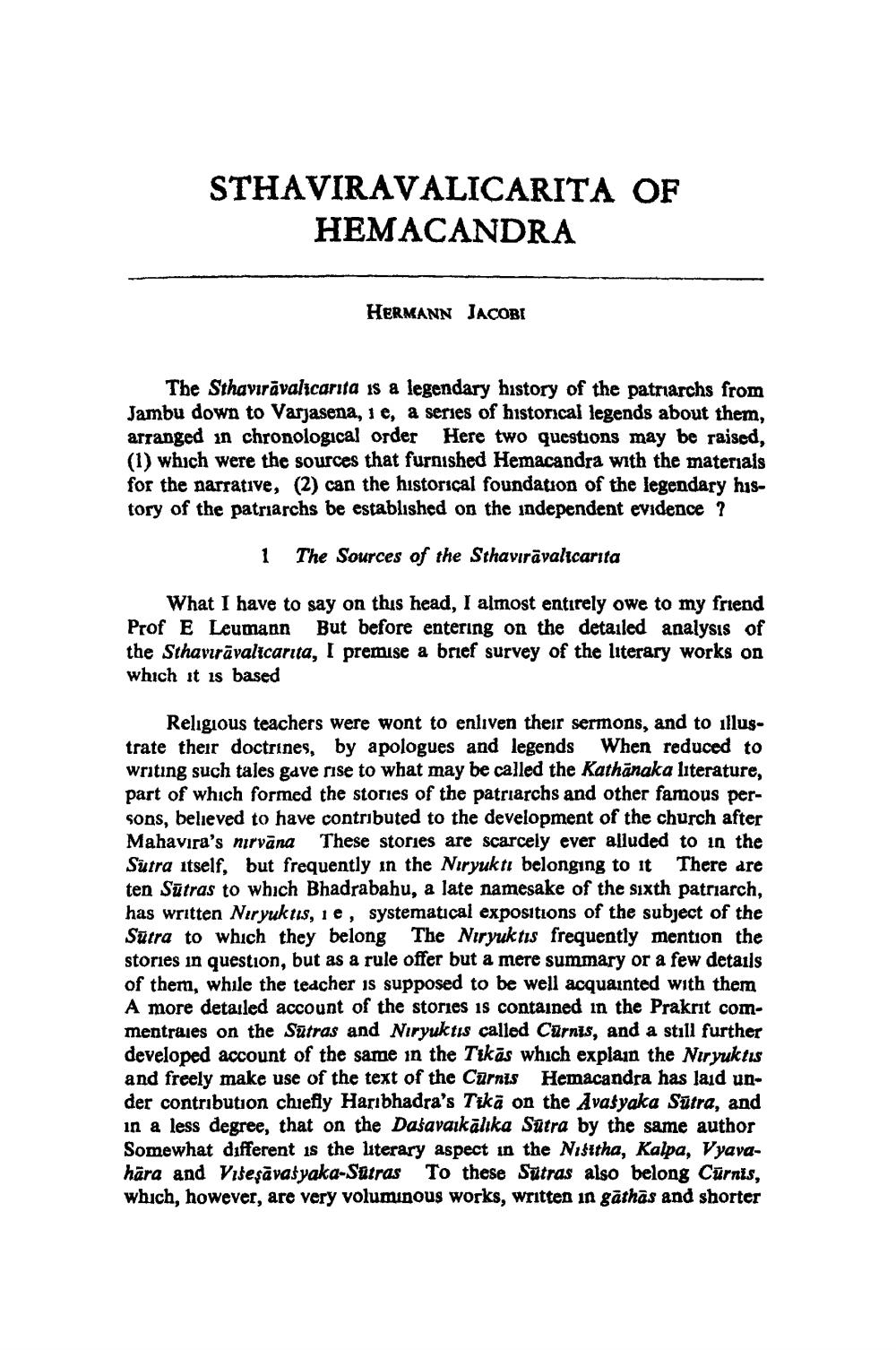________________
STHAVIRAVALICARITA OF HEMACANDRA
HERMANN JACOBI
The Sthaviravalicarita is a legendary history of the patriarchs from Jambu down to Varjasena, ie, a series of historical legends about them, arranged in chronological order Here two questions may be raised, (1) which were the sources that furnished Hemacandra with the materials for the narrative, (2) can the historical foundation of the legendary history of the patriarchs be established on the independent evidence ?
1 The Sources of the Sthaviravalicarita
What I have to say on this head, I almost entirely owe to my friend Prof E Leumann But before entering on the detailed analysis of the Sthaviravalicarita, I premise a brief survey of the literary works on which it is based
Religious teachers were wont to enliven their sermons, and to illustrate their doctrines, by apologues and legends When reduced to writing such tales gave rise to what may be called the Kathānaka literature, part of which formed the stories of the patriarchs and other famous persons, believed to have contributed to the development of the church after Mahavira's nirvana These stories are scarcely ever alluded to in the Sutra itself, but frequently in the Niryukti belonging to it There are ten Sutras to which Bhadrabahu, a late namesake of the sixth patriarch, has written Niryukus, 1e, systematical expositions of the subject of the Sutra to which they belong The Niryuktis frequently mention the stories in question, but as a rule offer but a mere summary or a few details of them, while the teacher is supposed to be well acquainted with them A more detailed account of the stories is contained in the Prakrit commentraies on the Sutras and Niryuktis called Curnis, and a still further developed account of the same in the Tikas which explain the Niryuktis and freely make use of the text of the Curnis Hemacandra has laid under contribution chiefly Haribhadra's Tikā on the Avasyaka Sutra, and in a less degree, that on the Dašavaıkālika Sūtra by the same author Somewhat different is the literary aspect in the Nisitha, Kalpa, Vyavahära and Viseşāvasyaka-Sutras To these Sutras also belong Curnis, which, however, are very voluminous works, written in gāthās and shorter




